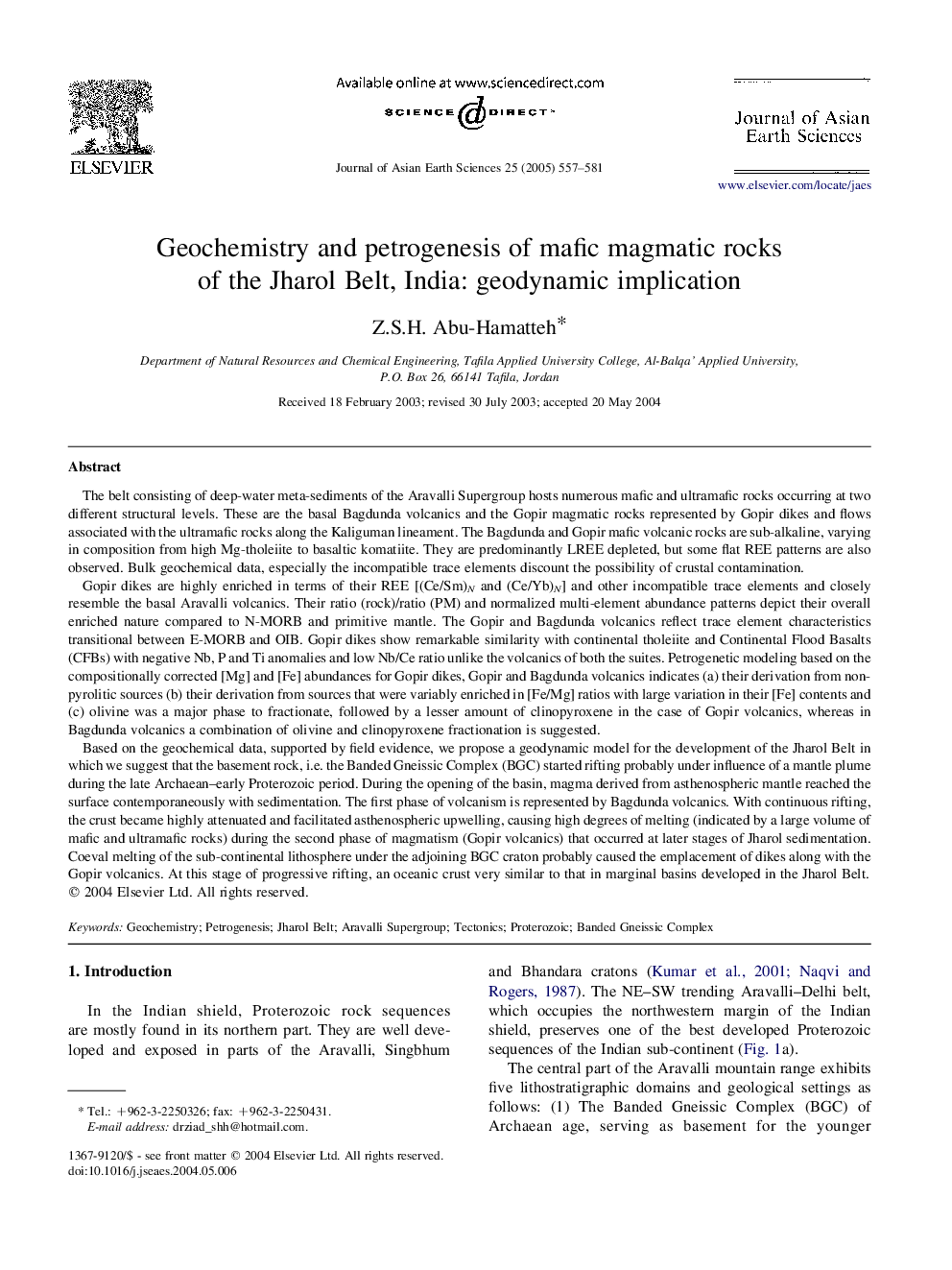| کد مقاله | کد نشریه | سال انتشار | مقاله انگلیسی | نسخه تمام متن |
|---|---|---|---|---|
| 9535646 | 1356887 | 2005 | 25 صفحه PDF | دانلود رایگان |
عنوان انگلیسی مقاله ISI
Geochemistry and petrogenesis of mafic magmatic rocks of the Jharol Belt, India: geodynamic implication
دانلود مقاله + سفارش ترجمه
دانلود مقاله ISI انگلیسی
رایگان برای ایرانیان
کلمات کلیدی
موضوعات مرتبط
مهندسی و علوم پایه
علوم زمین و سیارات
زمین شناسی
پیش نمایش صفحه اول مقاله

چکیده انگلیسی
Based on the geochemical data, supported by field evidence, we propose a geodynamic model for the development of the Jharol Belt in which we suggest that the basement rock, i.e. the Banded Gneissic Complex (BGC) started rifting probably under influence of a mantle plume during the late Archaean-early Proterozoic period. During the opening of the basin, magma derived from asthenospheric mantle reached the surface contemporaneously with sedimentation. The first phase of volcanism is represented by Bagdunda volcanics. With continuous rifting, the crust became highly attenuated and facilitated asthenospheric upwelling, causing high degrees of melting (indicated by a large volume of mafic and ultramafic rocks) during the second phase of magmatism (Gopir volcanics) that occurred at later stages of Jharol sedimentation. Coeval melting of the sub-continental lithosphere under the adjoining BGC craton probably caused the emplacement of dikes along with the Gopir volcanics. At this stage of progressive rifting, an oceanic crust very similar to that in marginal basins developed in the Jharol Belt.
ناشر
Database: Elsevier - ScienceDirect (ساینس دایرکت)
Journal: Journal of Asian Earth Sciences - Volume 25, Issue 4, July 2005, Pages 557-581
Journal: Journal of Asian Earth Sciences - Volume 25, Issue 4, July 2005, Pages 557-581
نویسندگان
Z.S.H. Abu-Hamatteh,